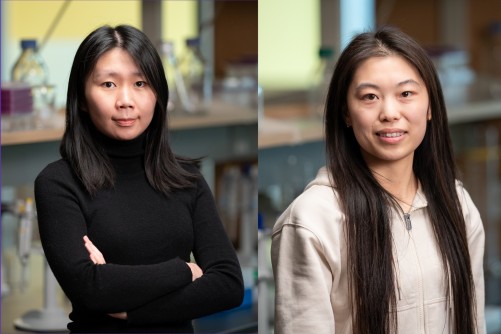Science
Researchers Uncover Mechanism Behind Sweet Taste Sensation

Scientists at St. Jude Children’s Research Hospital in Memphis, Tennessee, have made significant strides in understanding the mechanism behind the sweet taste sensation. On August 4, 2025, a study published in Cell Research revealed insights into how sweet taste receptors, which detect sugar and sweeteners, activate when binding to substances like sucralose and advantame. This groundbreaking research utilized cryo-electron microscopy to explore the full range of motion of sweet taste receptors, shedding light on a previously unknown activation mechanism.
The human sweet receptor consists of two proteins, TAS1R2 and TAS1R3, both part of the class C G protein–coupled receptors (GPCRs) family. Despite extensive research, the precise shape change that occurs when a sweet molecule binds to the receptor remained unclear. According to corresponding author Chia-Hsueh Lee, PhD, from the St. Jude Department of Structural Biology, capturing the receptor’s complete motion was essential for understanding its molecular mechanism.
Revealing the ‘Loose’ State of Sweet Receptors
The researchers identified a new state of the sweet taste receptor, which they refer to as the “loose” state. This state appears to represent the fully activated condition, complementing existing unbound and bound structures of the receptor. Dr. Lee noted, “With this knowledge, we can better understand the activation mechanism of the sweet receptor and infer that molecules that can stabilize this particular loose state should be sweeter.”
The study highlights the structural differences in the receptor’s Venus flytrap (VFT) domains. In the absence of a sweetener, these domains are tightly packed. However, when a sweetener binds to TAS1R2, a loop from the protein triggers the separation of the VFT domains, a significant distinction from other class C GPCRs. Co-first author Haolan Wang, PhD, explained, “This is a big difference compared to other class C GPCRs, where the VFT domains stick together in the activated state.”
The findings indicate that while sucralose and advantame engage with the receptor similarly, they do so in distinct ways. This variation presents an opportunity for the development of improved sweeteners.
Implications for Future Sweetener Development
The research team, including co-first author Xiao Chen, PhD, expressed curiosity about the receptor’s ability to bind various sweeteners. “By revealing unprecedented snapshots of the sweet taste receptor, our study provides new insights into how we perceive sweetness and helps guide the design of better sweeteners,” Chen stated.
The study also included contributions from Yiming Niu from The Rockefeller University, Chen Zhao from the University of Florida, as well as St. Jude researchers Yaxin Dai, Shabareesh Pidathala, Siyu Li, and Liang Wang. Funding for this research was provided by the National Institutes of Health (R01GM143282 and R01NS133147) and the American Lebanese Syrian Associated Charities (ALSAC).
Founded over 60 years ago, St. Jude Children’s Research Hospital is dedicated to advancing the understanding and treatment of childhood diseases. It is the only National Cancer Institute-designated Comprehensive Cancer Center focused exclusively on children. The institution’s research has significantly contributed to improving childhood cancer survival rates, which have increased from 20% to 80% over the decades. For more information, visit stjude.org and follow St. Jude on social media at @stjuderesearch.
-

 Lifestyle3 months ago
Lifestyle3 months agoLibraries Challenge Rising E-Book Costs Amid Growing Demand
-

 Sports3 months ago
Sports3 months agoTyreek Hill Responds to Tua Tagovailoa’s Comments on Team Dynamics
-

 Sports3 months ago
Sports3 months agoLiverpool Secures Agreement to Sign Young Striker Will Wright
-

 Lifestyle3 months ago
Lifestyle3 months agoSave Your Split Tomatoes: Expert Tips for Gardeners
-

 Lifestyle3 months ago
Lifestyle3 months agoPrincess Beatrice’s Daughter Athena Joins Siblings at London Parade
-

 World3 months ago
World3 months agoWinter Storms Lash New South Wales with Snow, Flood Risks
-

 Science3 months ago
Science3 months agoTrump Administration Moves to Repeal Key Climate Regulation
-

 Science2 months ago
Science2 months agoSan Francisco Hosts Unique Contest to Identify “Performative Males”
-

 Business3 months ago
Business3 months agoSoFi Technologies Shares Slip 2% Following Insider Stock Sale
-

 Science3 months ago
Science3 months agoNew Tool Reveals Link Between Horse Coat Condition and Parasites
-

 Sports3 months ago
Sports3 months agoElon Musk Sculpture Travels From Utah to Yosemite National Park
-

 Science3 months ago
Science3 months agoNew Study Confirms Humans Transported Stonehenge Bluestones









